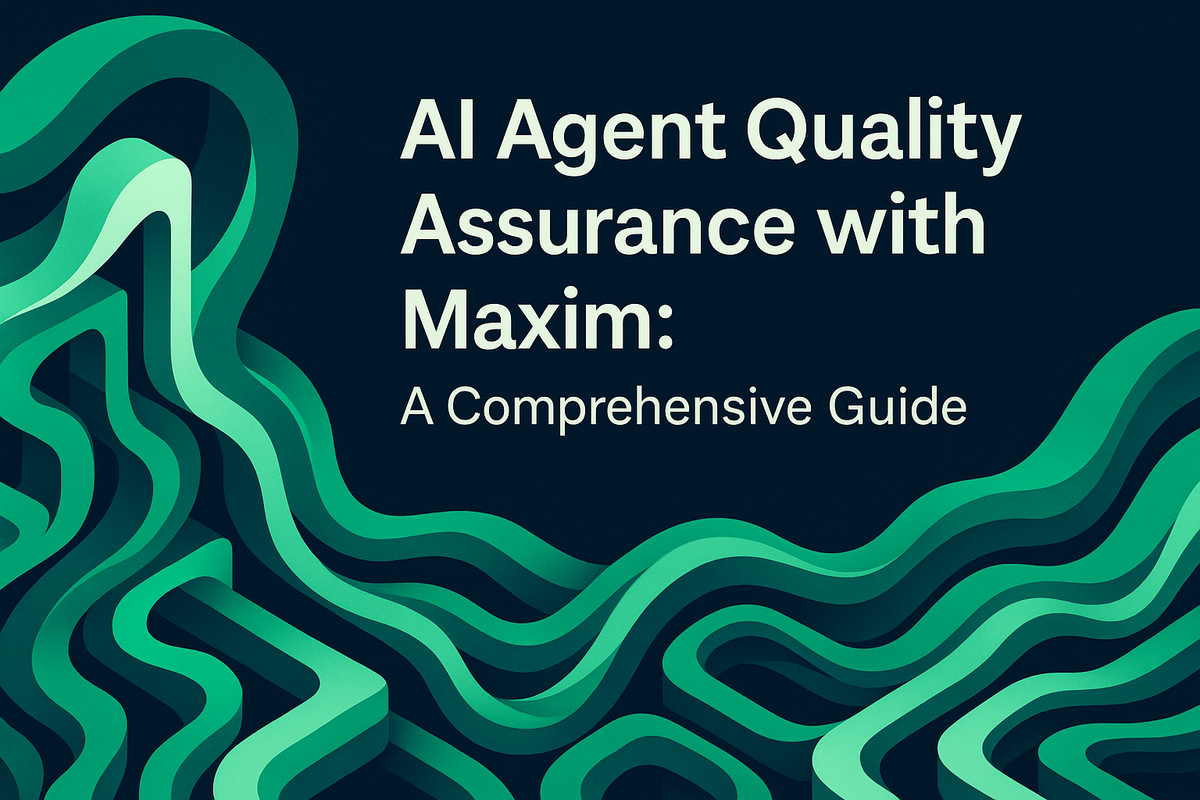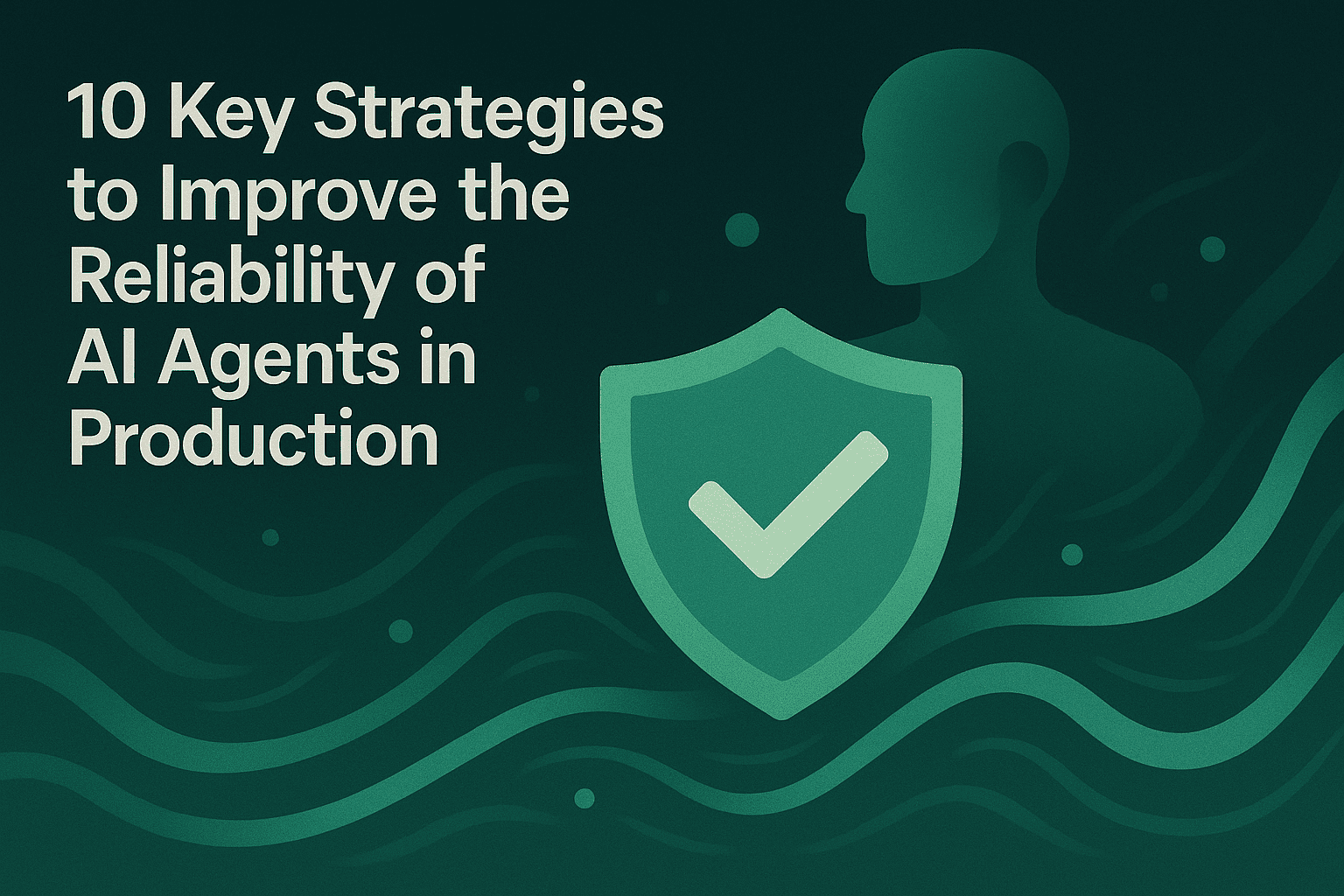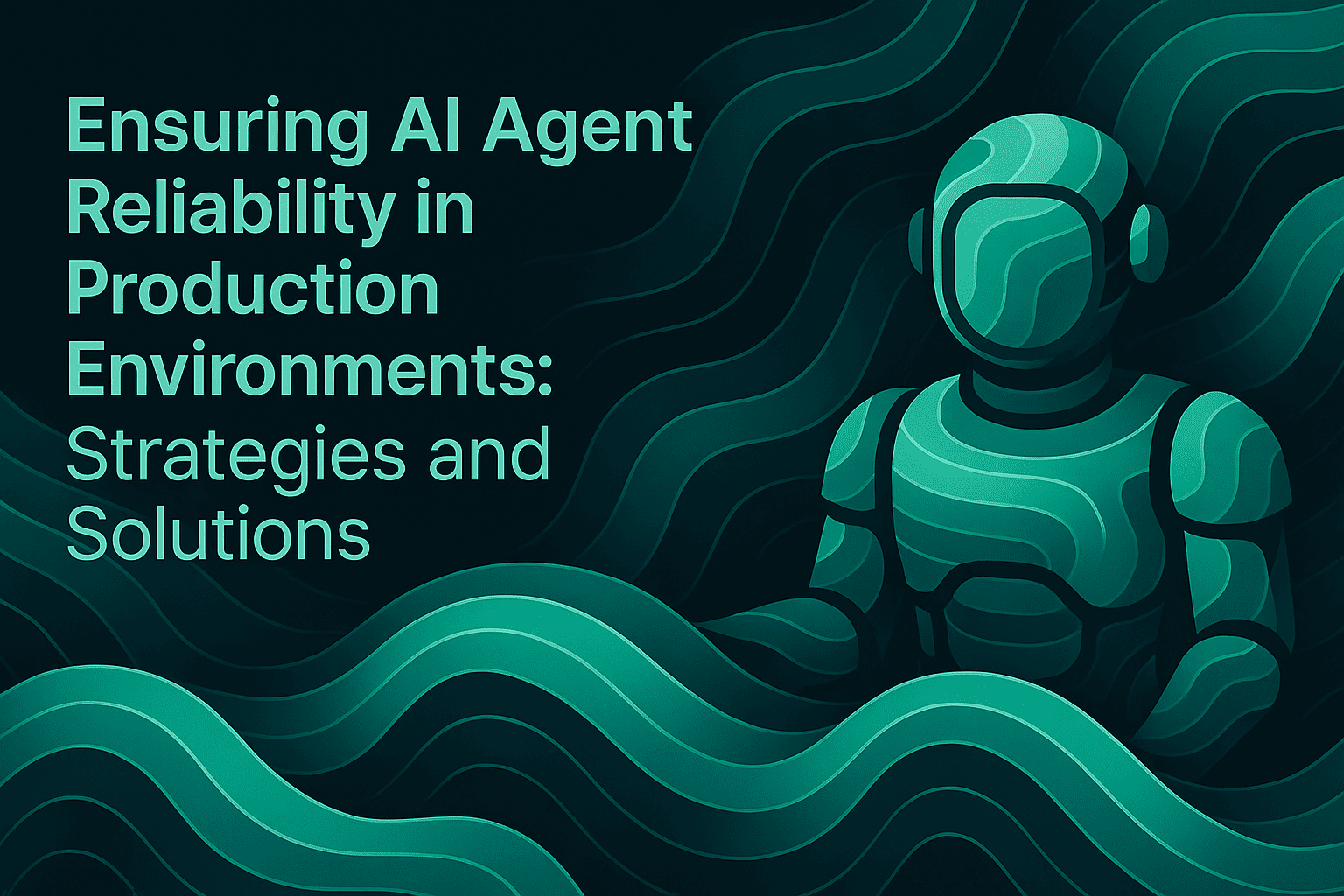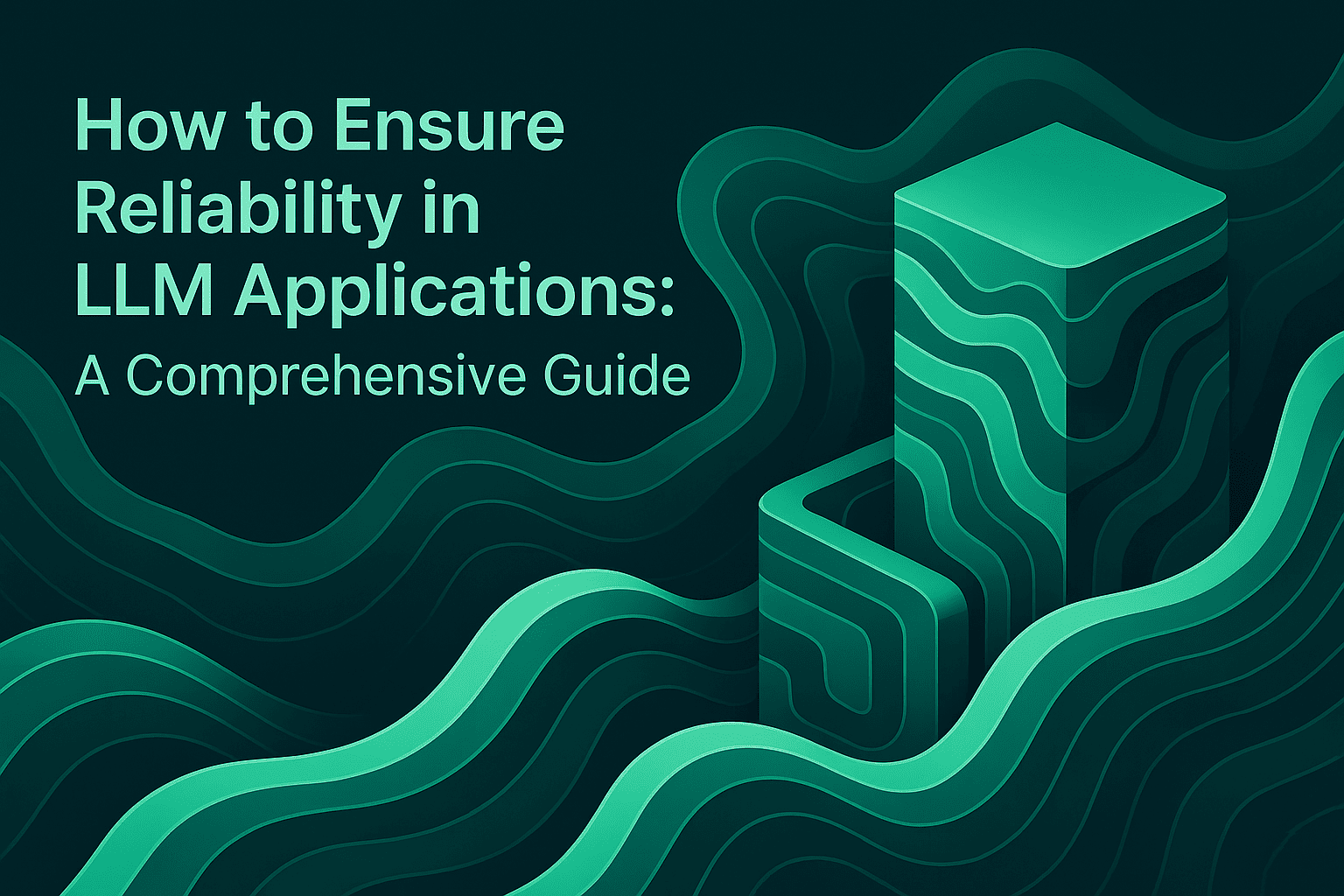AI Agent Quality Assurance with Maxim: A Comprehensive Guide

TL;DR
Maxim AI delivers a full-stack platform for AI agent quality assurance, combining simulation, evaluation, and observability to help engineering and product teams ship reliable, high-performing agentic applications. This guide explains how Maxim’s tools enable robust agent monitoring, debugging, and continuous improvement, with actionable insights and best practices for technical teams.
Introduction
Ensuring the quality and reliability of AI agents is a critical challenge for organizations deploying advanced conversational, retrieval-augmented generation (RAG), and multimodal systems. As agentic applications become more complex, traditional model monitoring and evaluation approaches fall short. Maxim AI addresses these gaps with an integrated suite for agent simulation, evaluation, and observability, empowering teams to deliver trustworthy AI at scale.
This blog explores how Maxim AI’s platform supports agent quality assurance across the entire lifecycle from experimentation and simulation to production monitoring and continuous evaluation. We’ll cover key features, technical workflows, and best practices, referencing authoritative resources and Maxim’s documentation for deeper insights.
Why AI Agent Quality Assurance Matters
Here’s how robust quality assurance transforms agentic application reliability:
- Complexity of Modern Agents: Today’s AI agents often orchestrate multiple models, tools, and data sources. Ensuring consistent, high-quality outputs requires granular monitoring and evaluation at every step (Maxim AI).
- Production Risks: Hallucinations, degraded performance, and failed tasks can go undetected without real-time observability and automated quality checks.
- Cross-Functional Collaboration: Engineering and product teams need shared visibility and control to optimize agent workflows and user experiences.
Maxim AI’s platform is designed to address these challenges, supporting technical teams with modular, self-contained tools for agent debugging, tracing, and evaluation (Maxim AI Docs).
Maxim’s End-to-End Approach to Agent Quality
Experimentation: Rapid Iteration and Prompt Management
Here’s how Maxim enables fast, reliable experimentation:
- Playground++: Advanced prompt engineering and deployment tools allow teams to organize, version, and iterate on prompts directly from the UI (Experimentation Product Page).
- Seamless Integration: Connect with databases, RAG pipelines, and prompt tools for comprehensive testing.
- Comparative Analysis: Evaluate output quality, cost, and latency across different models, prompts, and parameters.
This experimentation layer ensures that agents are optimized before deployment, reducing the risk of quality issues in production.
Simulation: Scenario-Based Agent Testing
Here’s how Maxim’s simulation tools improve agent reliability:
- AI-Powered Simulations: Test agents across hundreds of real-world scenarios and user personas (Agent Simulation & Evaluation).
- Conversational Trajectory Analysis: Monitor agent responses at every step, assess task completion, and identify failure points.
- Root Cause Debugging: Re-run simulations from any step to reproduce issues and apply learnings for agent improvement.
Simulation provides actionable insights into agent behavior, supporting both engineering and product teams in pre-release testing.
Evaluation: Unified Framework for Machine and Human Evals
Here’s how Maxim’s evaluation stack ensures agent quality:
- Evaluator Store: Access off-the-shelf evaluators or create custom ones for specific application needs (Agent Simulation & Evaluation).
- Quantitative and Qualitative Assessment: Measure prompt and workflow quality using AI, programmatic, or statistical evaluators.
- Human-in-the-Loop: Conduct human evaluations for nuanced, last-mile quality checks.
- Visualization: Analyze evaluation runs on large test suites across multiple prompt or workflow versions.
This unified framework enables continuous improvement and confidence in agent deployments.
Observability: Real-Time Monitoring and Debugging
Here’s how Maxim’s observability suite supports production reliability:
- Live Quality Tracking: Monitor production logs and receive real-time alerts for quality issues (Agent Observability).
- Distributed Tracing: Log and analyze production data using distributed tracing for granular insights.
- Automated Quality Checks: Run periodic evaluations based on custom rules to ensure ongoing reliability.
- Custom Dashboards: Create deep insights across agent behavior and optimize systems with just a few clicks.
Observability is essential for detecting and resolving issues quickly, minimizing user impact and maintaining trust in AI systems.
Data Engine: Seamless Data Management for Evaluation and Fine-Tuning
Here’s how Maxim streamlines data management:
- Multi-Modal Dataset Curation: Import, curate, and enrich datasets—including images—for evaluation and fine-tuning.
- Continuous Evolution: Evolve datasets from production data and feedback.
- Targeted Data Splits: Create splits for focused evaluations and experiments.
Robust data management underpins effective agent evaluation and improvement.
Technical Workflows for Agent Quality Assurance
Best Practices for Agent Debugging and Tracing
Here’s how to maximize agent reliability:
- Distributed Tracing: Use Maxim’s tracing tools to follow agent interactions across workflows and pinpoint root causes of failures.
- Automated Evals: Schedule periodic evaluations to catch regressions and maintain quality standards.
- Human Review: Incorporate human feedback for nuanced assessments and alignment with user preferences.
- Continuous Data Curation: Regularly update datasets with production logs and evaluation data for ongoing improvement.
Maxim’s Unique Value for Engineering and Product Teams
Here’s how Maxim stands out in the market:
- Full-Stack Lifecycle Coverage: Maxim supports experimentation, simulation, evaluation, and observability in one platform (Maxim AI).
- Cross-Functional Collaboration: Intuitive UI and flexible SDKs enable both engineering and product teams to drive agent quality.
- Customizability: Deep support for custom evaluators, dashboards, and data workflows.
- Enterprise-Grade Support: Robust SLAs, managed deployments, and hands-on partnership for enterprise customers.
Compared to competitors focused on narrow aspects of model monitoring or evaluation, Maxim delivers a comprehensive, collaborative solution for agentic applications.
Conclusion
Maxim AI empowers technical teams to achieve robust AI agent quality assurance through its integrated platform for simulation, evaluation, and observability. By combining advanced monitoring, distributed tracing, automated and human-in-the-loop evaluations, and seamless data management, Maxim enables organizations to ship reliable, high-performing agentic applications faster and with greater confidence.
To experience Maxim’s capabilities firsthand, request a demo or sign up today.
Frequently Asked Questions
What is agent observability and why is it important?
Agent observability refers to the ability to monitor, trace, and evaluate AI agents in real time, ensuring reliability and performance in production. It is essential for detecting issues, debugging failures, and maintaining user trust (Maxim AI Docs).
How does Maxim support agent debugging and tracing?
Maxim provides distributed tracing, real-time monitoring, and custom dashboards to help teams pinpoint root causes of failures and optimize agent workflows (Agent Observability).
Can product teams use Maxim without coding?
Yes, Maxim’s UI allows product teams to configure evaluations, dashboards, and data workflows without engineering dependence, supporting cross-functional collaboration (Maxim AI).
What types of evaluations does Maxim support?
Maxim supports machine, programmatic, statistical, and human-in-the-loop evaluations, enabling comprehensive quality assessment for agentic applications (Agent Simulation & Evaluation).
How does Maxim handle data management for AI agents?
Maxim’s data engine enables seamless import, curation, and enrichment of multi-modal datasets, supporting continuous improvement and targeted evaluations (Maxim AI Docs).
For more information, visit Maxim AI or explore the Maxim AI documentation.


